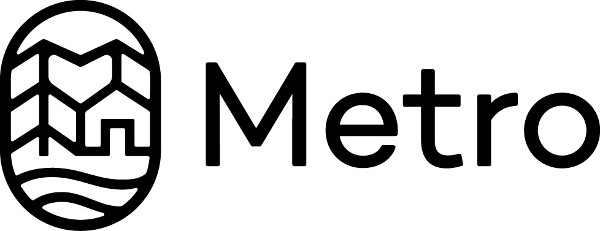MFG: ‘An insatiable demand for people’
Published 12:00 am Thursday, October 12, 2017

- Sunset High School students touring the Tosoh Quartz plant down the street from their school in Beaverton. It's louder, hotter and smellier than Starbucks, but entry level jobs start at $16 an hour and prospects are good.
Is there life after high school by going into manufacturing instead of college?
Trending
Portland area students turned out for National Manufacturing Day to explore this idea last Friday.
Students from robotics teams at Wilsonville and Glencoe High Schools brought their creations to Lam Research in Tualatin for an early morning display of STEM (Science Technology Engineering and Mathematics) proficiency. And teacher Catherine Geer’s Engineering and Computer Science class at Sunset High went down the road to Tosoh Quartz.
Lam Research makes the tools that are used by companies including Intel to make computer chips, such as memory and central processors. The company is booming, erecting a giant new structure on Southwest Leveton Drive in Tualatin. But Mike Snell, Managing Director, Tualatin Manufacturing at Lam Research, said the company is desperate to find talented students and experienced workers to take on both entry level and highly skilled work.
“Across most industrial economies there’s a shortage of skilled people in the STEM fields, including welders, electricians, engineers, electrical technicians, everything in short supply,” said Snell. “The technical needs are advancing, but less people are entering the field.”
Manufacturing is still a big part of the Portland economy.
“People believe manufacturing is gone, which is mistaken. We’ve had a significant increase in productivity, but we’re still hiring. We’ve added more than 700 people to manufacturing at this site, and it’s similar with suppliers that are local. There’s a lot of work available, everyone’s struggling to hire.”
To celebrate National Manufacturing Day (MFG Day), Oregon Manufacturing Extension Partnership (OMEP) teamed up with various education, workforce and manufacturing stakeholders throughout Oregon to host free educational events, tours and job fairs for hundreds of high school students to learn about careers in manufacturing.
Jobs
There was a mobile maker lab on display outside Lam, which teachers can borrow at no cost to their budget and give kids hands-on experience with electronics. Also, two successful FIRST robotics teams showed off their hard work. Glencoe High School had a robot that could scoop up large whiffle balls and send them in a shower through the air. Wilsonville had one that threw a basketball sized “boulder” (really a sponge ball) around eight feet into the air, toward a low hoop. (It can also extend its front and perform a pull-up.)
Nathan Tidball of Wilsonville High School said he learned a lot from his two years on the team, about electronics, design thinking and collaboration. Was the idea of Manufacturing Day for him to come and look for work? “The idea is to work for Elon Musk,” he said. He will do a STEM degree in college. Duck or Beaver? “Er, Harvard?”
Money
Manufacturing Day is designed to expand knowledge about high-skilled, high-paying jobs in manufacturing and the industry’s economic impact on Oregon. Tidball said that with 4,000 teams in the robotics competition nationwide, many of the components sell out. They learned a thing or two about supply chains. For instance, they acted quickly to buy for the chunky pneumatic tires they needed, which are mostly used on off-road skateboards. They had help from DW Fritz, a robot manufacturer in Wilsonville. A lot of it is who you know or who your teacher knows.
At Tosoh Quartz’s Building 3 on Northwest Science Park Drive, Sunset High students learned how giant cylinders of quartz glass were cut, ground and polished into circles which are used in chip making. The glass is extremely pure, resists high temperatures and is a good surface for etching microprocessor circuits with acids and high-pressure gasses.
The building was a converted warehouse, with swamp coolers to keep the temperatures down, dust bunnies clinging to the walls, and few creature comforts beyond water jugs and ear plugs to block out the constant whining of the motors. A finished, perfectly polished ring of glass sells for about $1,500.
Entry-level jobs in roughing, where new recruits can do the least damage, pay around $14 an hour. With experience, workers move down the line to more skilled tasks where they might make “15 to the mid 20s” dollars per hour, according to Clyde Loftis, Director of Manufacturing at Tosoh Quartz.
Turnover is mixed. On one hand, 18 percent of the staff have been there more than 20 years. On the other hand, 20 percent have been there less than one year.
The students took in the tool crib, where CNC machines are fixed and their bits are sharpened, and the packing area, where the quartz “windows” are stacked on blue foam inside blue boxes for transportation.
It was all a bit overwhelming and by the end they were out of questions. Snell, of Lam Research, summarized the skill shortage,
“People have lost touch with the opportunities of manufacturing. They think of an assembly line or foundry. Now there’s more precision required, all of our work is inside a clean room. People don’t have a concept of what that’s like unless they come and see it. Teachers can’t know about every vocation. So, this event is to help tell that story, how they can make a good career in STEM related fields. We hire at every level, from high school to PHD. We have an insatiable demand for good people.”
Joseph GallivanReporter, The Business Tribune971-204-7874





